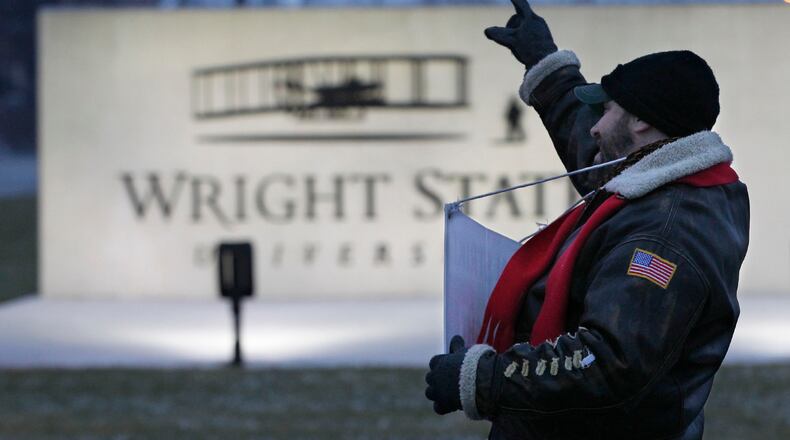None of it came as any surprise, said Laura Luehrmann, president of the university’s faculty Senate.
RELATED: With enrollment down, WSU administrators take a pay cut
“Dr. (Susan) Edwards (Wright State president) has been saying for weeks that if cuts are needed, she’ll be the first to take them,” Luehrmann said in an interview. “And this was one of the ways to show that. I think it was very well received.”
“I don’t think there was anger or surprise” among WSU faculty, Luehrmann said after the Zoom meeting.
The session was a regularly scheduled faculty Senate meeting, focusing on many topics over more than two hours, not just university finances.
With enrollment down due to the global pandemic, state government has recently informed university leaders to prepare for a “significant reduction in what is remaining of this year’s state share of instruction,” the university said in a campuswide email Monday.
RELATED: Big businesses win Paycheck Protection while small businesses wait
Refunds or credits due to students exceed $3 million and summer enrollment has been hit, resulting in an expected summer enrollment decrease of 17 percent, the university said.
Edwards, with the university provost, vice presidents, vice provosts and deans have “voluntarily agreed to take a 20 percent reduction in salary,” Wright State said.
Edwards has been discussing the university’s budgetary challenges with employees and community members for a while, the Senate president said.
“People are paying attention,” Luehrmann said. “They’re looking around. They see that this isn’t a Wright State problem. Higher ed is entering into one of its most challenging periods ever, and it’s not necessarily caused by the COVID-19 crisis, but this is certainly bringing it into stark relief.”
Edwards did not offer meeting participants on Monday a number or range of possible cuts, Luehrmann said.
“President Edwards explained that we must prepare for cuts, though we cannot know how deep,” said Noeleen McIlvenna, a WSU history professor and contract administration officer for the union representing faculty members.
She added, “So far the academic mission is being protected, which is what we want to hear.”
“I think we are all hoping that the governor (Mike DeWine) understands that many people might need to seek more or different education and so he will protect Ohio’s education at every level,” McIlvenna also said.
Wright State said in its email Monday that it is holding back on “all non-critical university-funded capital projects,” new contractual agreements for goods and services have been frozen, and “all discretionary non-compensation spending” has been eliminated.
Campus facilities will be left in “a low energy usage mode” where possible, the university also said.
“To date, Wright State has been committed to maintaining all personnel and positions. The state of Ohio has indicated they will release a plan addressing the return to work for Ohio businesses this week. We will review the plan and its impact on university operations in order to determine future staffing plans, which may include reductions in force,” the university email said.
About the Author


